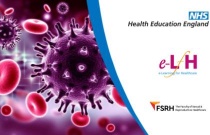PROJECT ROZANA: Drug Treatment in Kidney Failure Stage 3b-5 – Part 1
Lee Hayes & Lynn Brown
Adjusting the dose of drug treatment and contraindications in renal failure.
Advanced Comprehensive Obstetric and Anaesthetic Skills
LSTM
This course is suitable for all providers of obstetric surgery. Recognising that there is more to safe surgical care that the surgical procedure itself, the course leads the participant on a journey starting with good labour ward management and decision-making, surgical and anaesthetic preparation for safe surgery, best practice....
Lesson 5: Assessing and Managing Side Effects and Adverse Reactions of CAB-LA
Jhpiego, an affiliate of Johns Hopkins University
In this lesson, we will review side effects that CAB-LA users may experience. Clients typically do not experience significant side effects with use of CAB-LA, and for those who do, side effects are usually mild and resolve with minimal intervention. In addition to side effects, other clinical complications may arise that may be....
Drug Management of Pain: Core Knowledge
Martine Meyer
This session outlines an integrated approach to pain management considering the WHO analgesic ladder and also highlighting the importance of an individualised approach.
Ionization
Sue Hill
This session covers the properties of molecules that act as weak acids and weak bases. The Henderson-Hasselbalch equation will be derived and discussed in terms of the pharmacokinetic properties of anaesthetic drugs.
Drugs as Organic Molecules
Mary Stocker
This session provides the student with the foundations of organic chemistry. It will introduce the building blocks required for the understanding of the structure-activity relationships governing drug design, action and interaction in clinical practice.
Interactions Between Molecules
Mary E Stocker
This session explores the forces that hold molecules together and govern their interaction. This will include bonding, intermolecular and intramolecular attractions.
Anticoagulants
Kavinda Bandara, Nandita Divekar and Sandra Sowah
This session explains the clotting cascade and the pharmacology of anticoagulants.
Agonists and Antagonists
Tom Beach
This session provides an introduction to the fundamentals of drug-receptor interactions before moving on to discuss the concepts of affinity, potency and efficacy, and finally examining the concepts of agonism and antagonism.
Enzyme Induction and Inhibition
Alexander Spyridoulias
This session describes ways in which drugs interfere with enzyme activity. It covers the ways in which drugs can both stimulate and inhibit the action of enzymes as well as introducing enzymes as drugs.
Difficulty in Breathing
Lilian Nuwabaine
This course is aimed to equip Nurses and Midwives with knowledge and skills about managing a patient with difficulty in breathing.
Critical Care Bundles
Beth Waweru
This short course aims to enhance ICU nurses knowledge on use of care bundles in effective management of ICU patients.
COVID-19 Vaccine Preparation And Administration
Dr. Maureen Akolo
This course intends to equip nurses with knowledge on vaccine preparation and administration
Drugs Acting on the GI Tract
Sandeep Sharma
This session describes the classification of drugs currently used which act on the GI tract, as well as their dosage, common uses in clinical practice and side-effects.
Nutrition V: Nutrition Counselling and Promotion
The Hospital for Sick Children & ADRA Canada
Good nutrition and nutrition-related behaviours are critical for a child’s healthy growth, development and survival. Globally, approximately 45 percent of deaths among children under 5 are linked to undernutrition and 22.3 percent, or more than one in five children under age 5 worldwide has stunted growth. Across Kenya, mor....
Antifungal and Antiviral Drugs
Harriet Clift
This session describes the pharmacology and clinical indications for the use of antiviral and antifungal drugs in critical care.
CXR: Septal Lines
Richard Mannion
The aim of this session is to understand the anatomy of the lung lobule and its components and to recognise anatomically what constitutes an interlobular septum. We will explore conditions that cause septal thickening and learn how to use other clinical and radiological information to formulate a differential diagnosis.
FGM: Issues, Presentation and Management in Women and Around Pregnancy
Pallavi Latthe and Sveta Alladi
This session describes managing a pregnant woman with FGM, carrying out a reversal and how to document their assessment and treatment.
Critical Care Bundles
Beth Waweru
This short course aims to enhance ICU nurses knowledge on use of care bundles in effective management of ICU patients.
Mechanical Ventilation in COVID-19
Dr. Serah Wachira
The purpose of this course is to introduce the participants to the various modes of mechanical ventilation and how they can be applied in management of ventilator failure in COVID-19 patients.
Oral Hypoglycaemics
Dr Khyati Bakhai
This session provides an overview of oral hypoglycaemic agents, their indications, cautions and the clinical guidelines governing their use.
Diabetic Foot
Sapna Puppala and Stephen Davies
This session introduces the basic pathophysiology of midfoot pain in a patient with diabetes. The imaging modalities required to evaluate changes in these patients are described.
Imaging of Renal Hypertension
Peter Brown
This session gives an overview of the causes of hypertension, appropriate imaging tests and evaluation strategies for patients with renovascular hypertension.
Health History and Risk Assessment
Dr Emily Gilbert and Ms Caroline Gumbley
This session looks at the taking of medical history, including sexual history. It also discusses risk assessment for sexually transmitted infections (STIs) and pregnancy.
Additional Training in Subdermal Implants (SDIs)
Julia Hogan, Laura Patterson, and Dr Nazia Hussain
The session will outline the advantages and disadvantages of a subdermal implant and detail possible side-effects and the management of these. Contraindications will also be discussed.
























